Milk cotton yarn is a high-quality type of yarn derived from casein protein found in milk, known for its distinctive softness, durability, and hypoallergenic properties.
Milk cotton yarn, as the name suggests, is a unique type of yarn that combines milk protein and cotton fibers. This blend results in a yarn that is incredibly soft, lightweight, and has a lustrous sheen, making it a favorite among knitters and crocheters.
It’s also hypoallergenic and antibacterial, making it ideal for creating baby items, wearable crafts, and home décor.
As you delve deeper into this article, you’ll discover the specifics of milk cotton yarn, including its production process, benefits, and suitable project ideas.
So, whether you’re a seasoned yarn enthusiast or a curious beginner, this comprehensive guide will provide all the details you need about milk cotton yarn.
Key takeaways:
- Milk cotton yarn is a soft, lightweight, and lustrous yarn.
- It is hypoallergenic and antibacterial, great for baby items.
- Milk cotton is a semi-synthetic yarn made from casein protein and other fibers.
- The production process involves extracting casein from milk and spinning it into yarn.
- Pure milk cotton yarn may not be fully eco-friendly due to chemical processing.
What Is Milk Cotton Yarn?
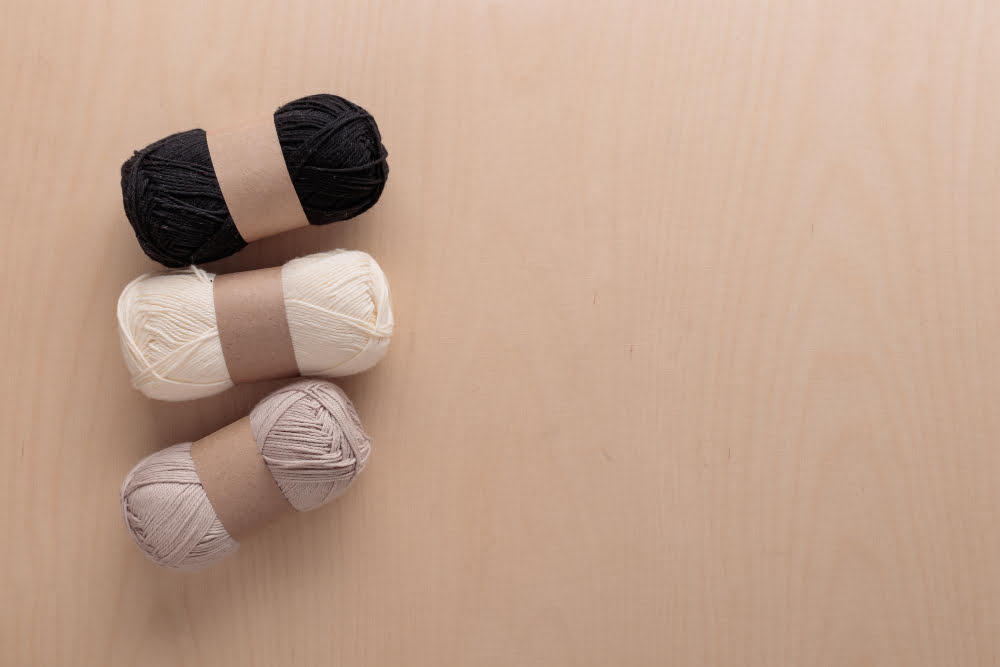
Milk cotton yarn is a type of semi-synthetic yarn that, contrary to what its name might suggest, is not created entirely from milk. It is made by generating a protein from the dairy product, known as casein. This protein is treated in a lab to extract the fibers, which are then spun into threads to create the finished product.
Here are several crucial characteristics of this unique yarn:
- Semi-synthetic Composition: While milk is an essential ingredient in its production, milk cotton yarn is actually combined with other fibers, often acrylic or rayon, to improve its stability and usability.
- Soft and Silky Texture: It encompasses one of the softest textures among different yarns, making it a favored choice for baby clothes, lightweight summer knitwear, and sensitive skin items.
- Durability: Despite it being soft, the yarn is surprisingly durable making it ideal for items supposed to last such as blankets and toys.
- Hypoallergenic: The yarn is also hypoallergenic because it originates from a natural protein, which makes it a good choice for individuals with sensitive skin or allergies.
- Biodegradability: Compared to fully synthetic fibers, milk cotton is much more biodegradable, giving it certain environmental advantages.
Milk Cotton Is a Semi-Synthetic Fiber

Milk Cotton, as the name suggests, comes from the protein in milk, namely Casein. Given this unique origin, it is neither a truly natural fiber, such as cotton or wool, nor purely synthetic like acrylic or polyester. Instead, it occupies a middle ground as a semi-synthetic fiber.
The production process involves:
- Extracting the Casein proteins from skimmed milk.
- The extracted proteins are then soaked in alkaline solution and dissolved via a scientific process.
- Synthetic chemicals are used to form the final product of a fiber that can be spun into yarn.
This combination of natural and artificial materials and methods gives Milk Cotton some specific characteristics which include softness comparable to natural fibers, and the durability of synthetic fibers. The process also influences its environmental impact, which is a subject worth exploring in its own section.
How Is Milk Cotton Produced?
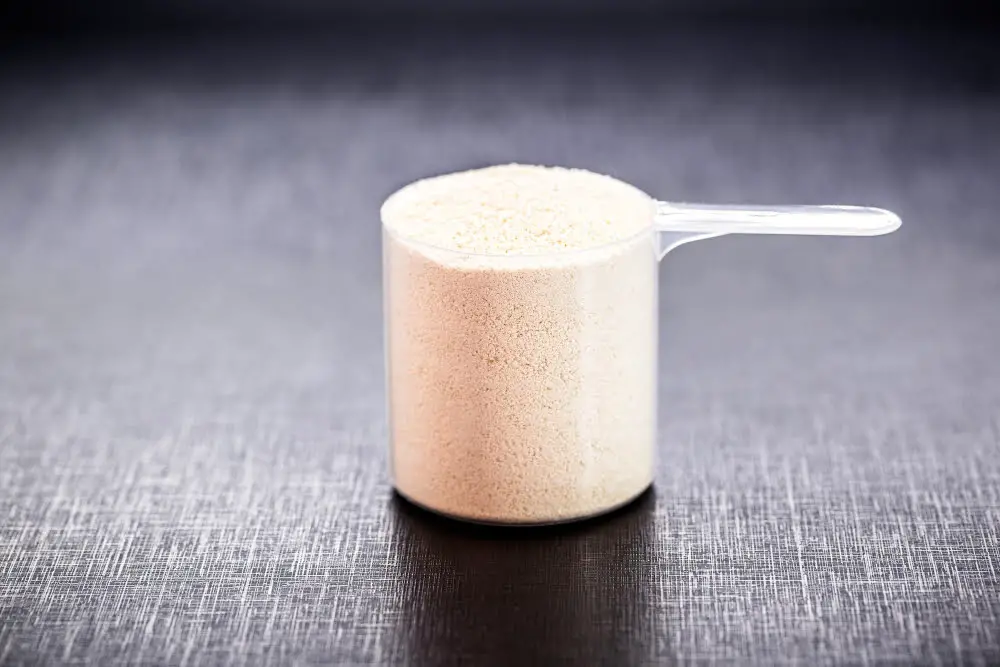
Creating milk cotton yarn is a complex process that involves the following key steps:
1. The process begins with casein, which is the primary protein found in milk. This is extracted from skimmed, evaporated, and dried milk.
2. The casein is then purified to create the base product for the yarn. This involves removing all potential contaminants to ensure a pure base for the fiber.
3. The next stage involves dissolving the casein in an alkali solution. This results in a thick, viscous liquid which can be extruded through fine holes into an acidic bath.
4. Within the acidic bath, the strands of casein coagulate, forming into fibers. These fibers are further solidified and stabilized with formaldehyde and other substances.
5. The resulting fibers are delicate and would not withstand the rigors of regular use if left in their pure form. To resolve this, they are typically blended with other materials such as acrylic or rayon, creating a stronger end product.
6. The final step in the process is the spinning of the blended fibers into yarn. Done on a spinning wheel, this process determines the thickness and texture of the end product.
This method of creating milk cotton has come a long way since the early days when the unstable casein fibers were known to be problematic, and manufacturing was much less predictable. Today, thanks to modern technology and know-how, milk cotton yarn can be consistently produced to a high standard.
The Modern Production Process
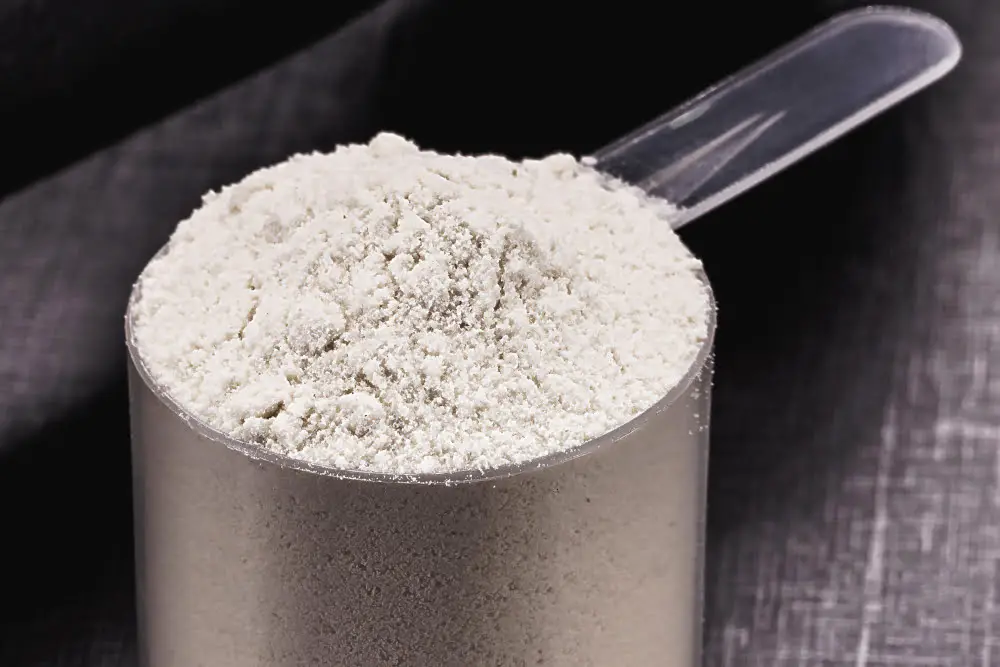
The modern method to manufacture milk cotton yarn begins with the extraction of the casein protein from milk. This protein is dehydrated and ground into powder form, then dissolved in a solution to form a liquid. Next, this liquid is forced through a spinneret, a mechanical device with multiple tiny holes, to create long, thin strings. The strings are then solidified by a chemical reaction which provides the infamous strength and durability to the fibers. The last step involves treating them further with various chemicals to improve their resilience and water resistance.
The production process might sound complex, with the use of chemicals and machinery, but it’s a well-established procedure that balances efficiency with environmental consciousness. During manufacturing, care is taken to minimize waste and incorporate environmentally-friendly practices where feasible. Uncolored milk cotton is biodegradable, another key aspect that makes it attractive.
On a note to understand better, the production process is similar to the one used to manufacture other man-made fibers like rayon or acrylics, with the distinctive feature being the casein protein used in milk cotton formation.
Casein Fibers Are Not Stable On Their Own
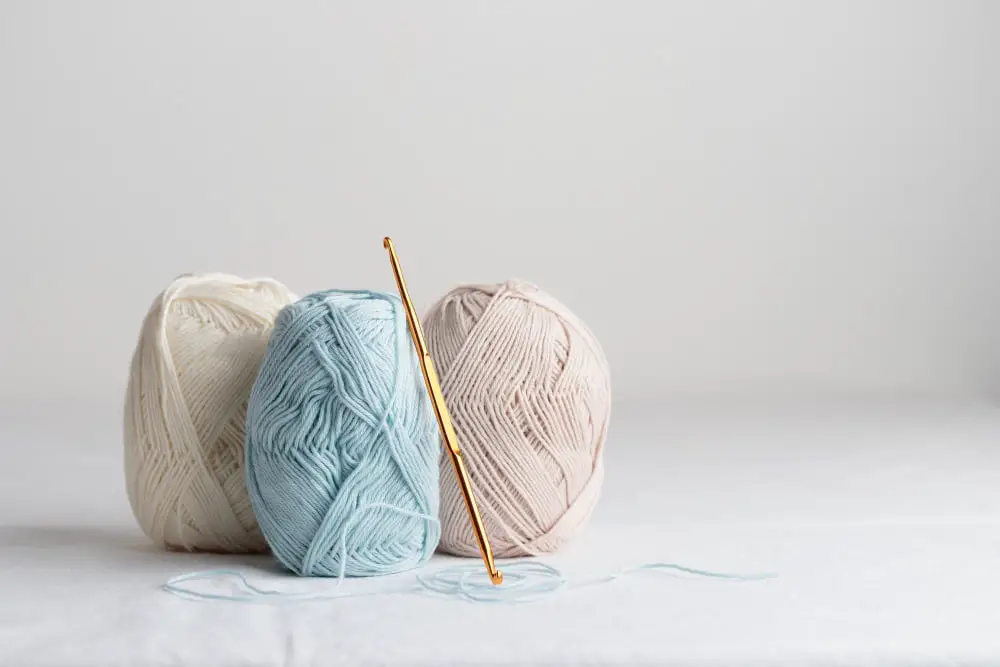
While casein fibers are created from the proteins in milk, they require a bonding agent to achieve the stability required for yarn production. The proteins on their own lack the necessary structural integrity and resilience. Without the bonding process, the resulting yarn would be prone to breaking and displaying poor durability.
In the process of creating functional yarn, casein fibers are subjected to a chemical treatment which helps transform them into useful, sturdy threads. Commonly, acrylonitrile, a compound used in the production of acrylics, is the bonding agent used. This compound helps to reinforce the structure of casein fiber, making it a feasible material for yarn.
When bound with acrylonitrile or other suitable compounds, the fragile casein fibers transform into a strong and durable material. This modified casein fiber forms the base of milk cotton yarn, providing its distinct characteristics.
However, the use of these chemicals means that although milk cotton yarn starts with a natural, renewable source, it isn’t wholly natural or biodegradable as some might expect.
The extent of bonding necessary to create a usable yarn can vary, affecting the physical properties and characteristics of the final product. Factors such as the guage of the yarn, resistance to pilling, and even the feel can be determined by the specifics of this bonding process.
Is “Pure” Milk Cotton Yarn Eco-Friendly?
Although often touted for its eco-friendliness, pure Milk Cotton yarn is a subject of ongoing debate. There are several reasons for this:
The production method: Although it utilizes a waste product – casein, from the milk industry, the process of turning casein into fiber involves heavy chemical processing and use of petroleum-based polymers, which is not environmentally friendly.
Usage of milk: Arguments have been made that the production of Milk Cotton yarn uses milk that could potentially be feeding people. In some cases, it is produced from surplus or waste milk – but not always.
Deceptive labeling: There may be confusion over what constitutes “pure” Milk Cotton yarn. Due to the instability of the casein fibers alone, it must be mixed with other fibers (usually synthetic) for strength and durability.
Lack of Biodegradability: A critical marker for an eco-friendly product is biodegradability. Unfortunately, due to the other fibers with which it is often blended, Milk Cotton yarn may not be as biodegradable as one would hope.
In conclusion, while it certainly possesses unique properties and can be a beneficial addition to the yarn industry, the eco-friendliness of pure Milk Cotton yarn is something to be critically assessed by conscientious consumers.
Specific Features of Milk Cotton Yarn
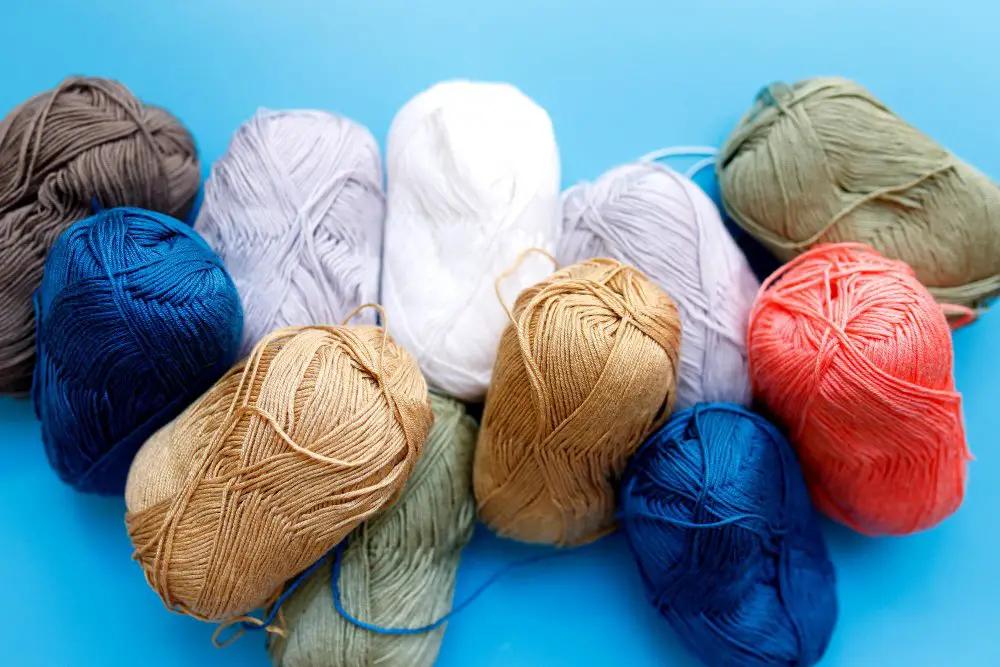
Milk cotton yarn has several characteristics that set it apart from other types of yarn:
- Exceptional Softness: This yarn is well-known for its silky, plush texture that’s gentle against the skin.
- Hypoallergenic: Due to the presence of casein, it’s less likely to cause allergic reactions, making it an ideal choice for people with sensitivity to other fibers.
- Moisture Absorbent: Milk cotton yarn effectively absorbs moisture, enhancing its comfort during warm weather or physical exertion.
- Lustrous Shine: The yarn has a natural shine, providing a beautiful finish to your knitting or crocheting projects.
- Thermal Properties: Milk cotton has excellent thermal properties, providing warmth in cooler temperatures while remaining breathable.
- Durability: When properly cared for, milk cotton yarn products are noted for their resilience and longevity.
- Easy Care: Garments made from this yarn are machine washable and maintain their shape and color well.
- Versatility: Ideal for a variety of projects, from clothing to blankets and more, due to its combination of softness, strength, and flexibility.
Where Can You Buy Milk Cotton?

Several online and local stores offer a variety of milk cotton yarn, making it accessible for everyone.
To start with, marketplace giants such as Amazon and eBay have a plethora of options in terms of color, size, and price. These platforms provide an opportunity to compare prices and reviews before making a purchase.
Secondly, popular craft stores like Michael’s, Hobby Lobby, or Joann’s also typically stock milk cotton yarn in their store locations. They often have knowledgeable staff that can provide more information and assist with selecting the right product.
Another option to explore is local yarn stores. These specialized shops often carry high-quality, unique yarns that may not be found elsewhere.
Lastly, check out independent online yarn stores like KnitPicks, LoveCrafts, or Yarnspirations. These outlets often offer extensive yarn collections and deliver to your doorstep.
Remember to check the product details and reviews before purchasing, as the quality of milk cotton yarn can vary between different brands.
FAQ
What is the difference between cotton and milk cotton yarn?
Milk cotton yarn is composed of the casein fiber derived from milk, allowing for a cotton-like texture and tensility, while pure cotton yarn is exclusively made from the fibers of the cotton plant.
What is milk cotton yarn used for?
Milk cotton yarn is commonly used in crafting socks, rugs, cozies, market bags, among other items due to its soft, wool-like texture.
Is milk cotton yarn better than acrylic yarn?
Milk cotton yarn presents distinct advantages over acrylic yarn due to its softer feel, higher durability, resistance to pilling, and hypoallergenic properties.
How is milk cotton yarn produced?
Milk cotton yarn is produced by extracting the protein from dehydrated milk, which is then liquified and spun into fibers that are combined with cotton.
Can milk cotton yarn be used for all knitting and crocheting projects?
While milk cotton yarn is soft, durable, and hypoallergenic, making it ideal for many projects, its slight elasticity limits its suitability for patterns requiring firm, rigid shapes.
What specific care instructions does milk cotton yarn require?
Milk cotton yarn requires gentle hand washing in cold water and air drying to maintain its quality and longevity.





